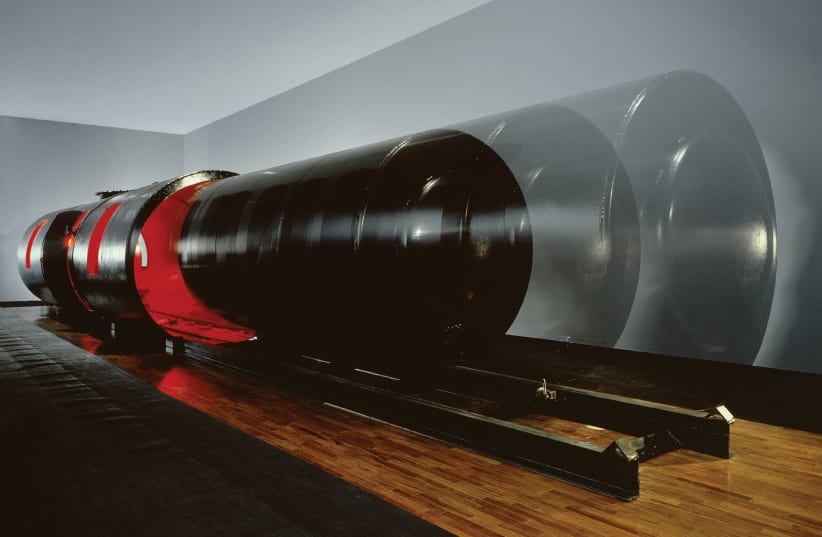“For me, she is the queen of the art world,” says Landau. “This is a major achievement for Tel Aviv Museum of Art, and we are all very proud and excited.”
The exhibition presents the first comprehensive overview of her work in Israel, focusing on relationships and her monumental sculpture Twosome (1991).
In the course of her artistic career, which spanned over seven decades, Bourgeois worked in a variety of media, including installation, performance, sculpture, drawing and printmaking, and experimented with a wide range of materials, including wood, plaster, latex, marble, bronze and textile. Autobiographical yet universal, abstract yet figurative, Bourgeois’s art explored the formal manifestations of emotion, memory and the self in its relationship with the other, constantly delving into psychoanalysis and advocating feminism. Not only the abundance of sculptural forms and materials inspired generations of artists, but also Bourgeois’s extensive writings, which became a part of her legacy.
The exhibition at Tel Aviv Museum of Art features 52 works: large-scale and smaller sculptures in various materials, works on paper and textiles dating from 1947 to 2010. It is centered on the monumental sculpture Twosome, created in 1991 especially for the exhibition “Dislocations” at the MoMA, and displayed only twice since. Now it not only celebrates its new display, but has also inspired the choice of the other works in the exhibition that echo the artist’s concern with relationships, whether between mother and child or a couple of lovers. Relationships are crucial in Bourgeois’s dramatic, painful and personal art.
Louise Bourgeois was born in 1911 into a Parisian family whose business was restoring medieval and Renaissance tapestries. The encounter with textiles in her childhood inspired her later work. Initially, she studied philosophy, geometry and mathematics, but after her mother’s passing, she changed direction and decided to study art and art history. In 1938 she met her future husband, American art historian Robert Goldwater, and moved to New York. There she started her career as an artist creating drawings, paintings, prints – and later on three-dimensional works in wood, followed by experimentation in latex and plaster, all the while exploring the human body inside out.
Her first retrospective at the New York MoMA in 1982 (the first large scale sculpture for a female artist at this institution), at the age of 71, brought her wide recognition, forming a turning point in her grand, fruitful career. Around the same time, Jerry Gorovoy, a young artist and curator, became Bourgeois’s assistant and close friend until her death in 2010.
“There is a famous photograph of hers taken by Robert Mapplethorpe, where Bourgeois is smiling, while holding her large-scale phallic “Filette” under her arm and which will be installed at the entrance to our exhibition,” says Landau, smiling too.
“We have works from all her major series,” she continues, “including one of the most important pieces from her “Cells” series – Passage Dangereux (Dangerous Passage).”
The Cells – those closed territories with locked memories from her childhood evoking not only a living organism, but also a monastery enclosure and even a prison – comprise a mixture of architectural elements, found objects and sculptural fragments.
Other key works in the exhibition include her early Personages, and a large double Spider Couple. The exhibition closes on January 20, 2018.
